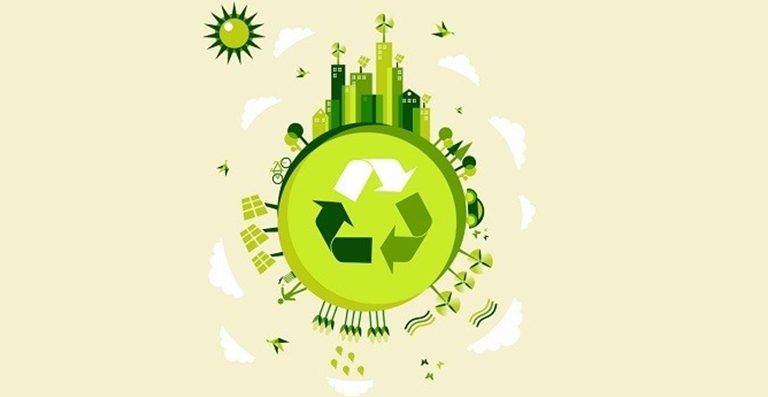What are Green Plastics &Their Environmental Benefits?
What are Green Plastics &Their Environmental Benefits?
The awareness and concern over Earth’s environmental degradation are rapidly increasing around the globe. As a result, an increasing number of businesses and innovators are focusingon environmentally sustainable alternatives. One such alternative that has come up is called ‘Green Plastic’.
Plastics can be found everywhere around you. Most of these plastics (hydrocarbon plastics) are traditionally made from nonrenewable oil-based products.Green plastics, on the other hand, are biodegradable plastics usually made from plant-based polymers.
What are Green Plastics?
To put it simply, green plastics or bioplastics are plastic materials that are either:
- Biodegradable
- Made partially or entirely from biological materials
- Both of the above
These plastics are becoming increasingly popular as they can reduce greenhouse gas emissions, dependency on fossil fuels, and landfill volumes. These plastics are still in their infancy, but they have the potential for incredible growth. Green plastics can be used for a wide range of applications, including theproduction of disposable and durable goods.
Some of the most commonly used bioplastics are:
Polyethylene Terephthalat
This part bio-based plastic is also known as bio-PET. It is made from bioethanol from sugar cane and is the leading drop-in bioplastic. The best part about this polymer is that it can replace its petrochemical counterpart. Bio-PET comprises 30-35% percent biomass on average.

Polyethylene (PE) and Polypropylene (PP)
The bio-based versions of PE and PP comprise 100% biomass, non-biodegradablepolyolefins based on bioethanol. They’re the second most popular bioplastics. These can be used to include rigid containers, barrier coatings, lidding, film wraps, and othersimilar products.
Polylactic Acid (PLA)
PLA comprises 100% biomass and is a biodegradable plastic. It can be manufactured using the most conventional polymer processing methods. It is strong but brittle and is used to make rigid containers, barrier coatings, and films.
There are numerous other green plastics like Polyhydroxy Alkanoates (PHAs), Cellulose Acetate (CA), and Polyamide (PA) that are being developed and implemented in various industries.
Benefits of Green Plastics
Lower Environmental Impact
As the name suggests, green plastics are better for the environment. This is mainly because they reduce fossil fuel depletion and greenhouse gas emissions. The environmental impact of green polymers is considerably lower than their petroleum-based counterparts. For example, Coca-Cola’s initial studies show that bottles with 30% bio-PET reduce carbon emissions by 20%.
Biodegradable green plastics help in reducing the waste that occupies landfills. There are systems in place to capture and compost the plastic and produce useful products through the process. Composting can also save money that municipalities and companies have to spend as landfill costs.
Customer Appeal
Many consumers are now looking at ways they can help the environment. As a result, brands that use green plastics will appeal to these consumers. Moreover, the use of environmentally sustainable practices has shown to enhance brand image in the minds of customers.
Time Savings
In certain industries, the use of biodegradable plastics can save time. Many crops, for example, are covered in thin polypropylene mulch. This has to be collected and recycled every season. If a bioplastic mulch is used instead,it can simply dissolve and even improve the carbon content of the soil. Similarly, compostable utensils can help restaurants save time in sorting waste.
Do you manufacture green plastics or are interested in them? PlastivisionIndia 2020 is the place to be for anyone related to the plastic industry. You can explore innovations and make incredible connections that will help you and your business. Book your booth or register as a visitor today!
Leave a Reply Cancel reply
Recent Posts
- Understanding The Materials That Are Used To Build Plastic Toys
- All You Need To Know About Food-grade Plastics
- A Glance At The Materials That Boost The Performance Of Plastics
- Understanding The Importance Of Exploring New Business Opportunities In The Plastic Industry
- Understanding The Importance Of Investing in R&D For The Plastic Industry
Categories
- 3D Printing
- AIPMA
- Automation
- Automobile Sector
- Bio Plastics
- Environment
- Innovations In Recycling
- Latest Innovations
- Molds & Dies
- News
- Packaging Industry
- Plastic
- Plastic Application
- Plastic Industry
- Plastic Market
- Plastic Myths
- Plastic News From The World
- Plastic Packaging
- Plastic Products
- Plastic Recycling
- Plastic Solar Cells
- Plastic Toys
- Plastic Waste
- Plastic World
- Plastics
- Plastics And Their Applications
- Plastics In Agriculture
- Plastics In Healthcare
- Plastics In Medical Industry
- Plasticulture
- Processing Machinery
- Recycling Machines
- Robotics
- Uncategorized
- Virtual Reality
Archives
- November 2023 (3)
- October 2023 (2)
- September 2023 (3)
- August 2023 (3)
- July 2023 (3)
- June 2023 (3)
- May 2023 (2)
- April 2023 (2)
- March 2023 (2)
- February 2023 (2)
- January 2023 (2)
- December 2022 (3)
- November 2022 (1)
- October 2022 (1)
- September 2022 (2)
- August 2022 (1)
- July 2022 (3)
- May 2022 (3)
- March 2022 (2)
- February 2022 (1)
- January 2022 (1)
- September 2021 (2)
- August 2021 (3)
- July 2021 (4)
- June 2021 (4)
- May 2021 (3)
- April 2021 (2)
- March 2021 (4)
- November 2019 (8)
- October 2019 (8)
- September 2019 (8)
- August 2019 (8)
- July 2019 (8)
- June 2019 (8)
- May 2019 (8)
- April 2019 (8)
- March 2019 (8)
- February 2019 (11)
- January 2019 (8)
- December 2018 (8)
- November 2018 (12)
- October 2018 (12)

